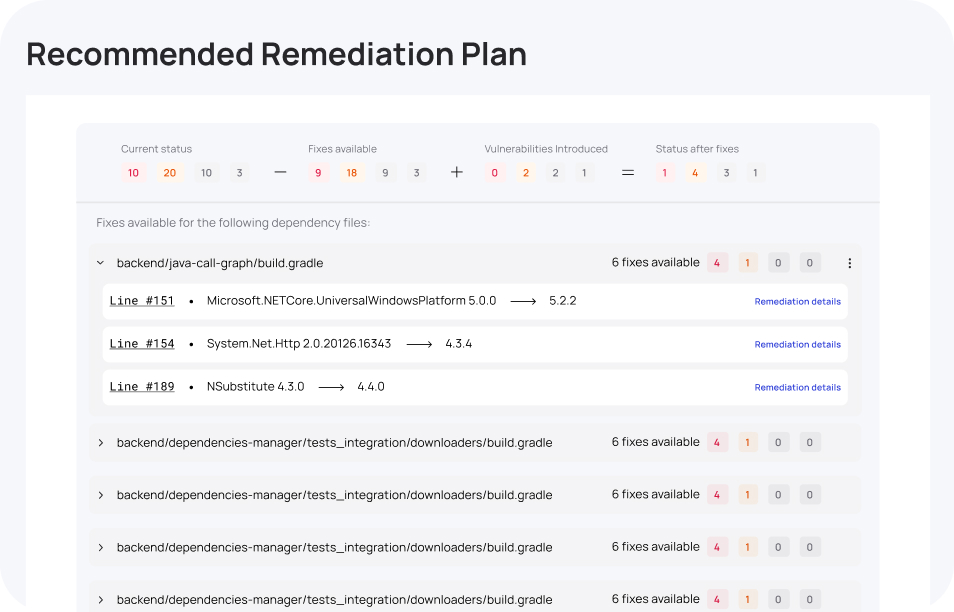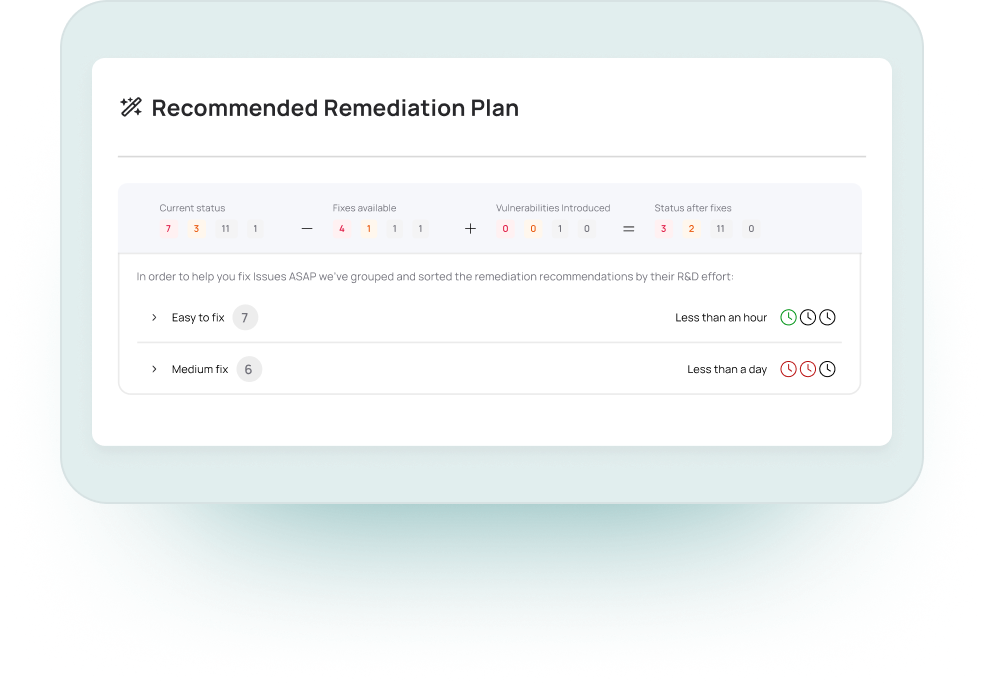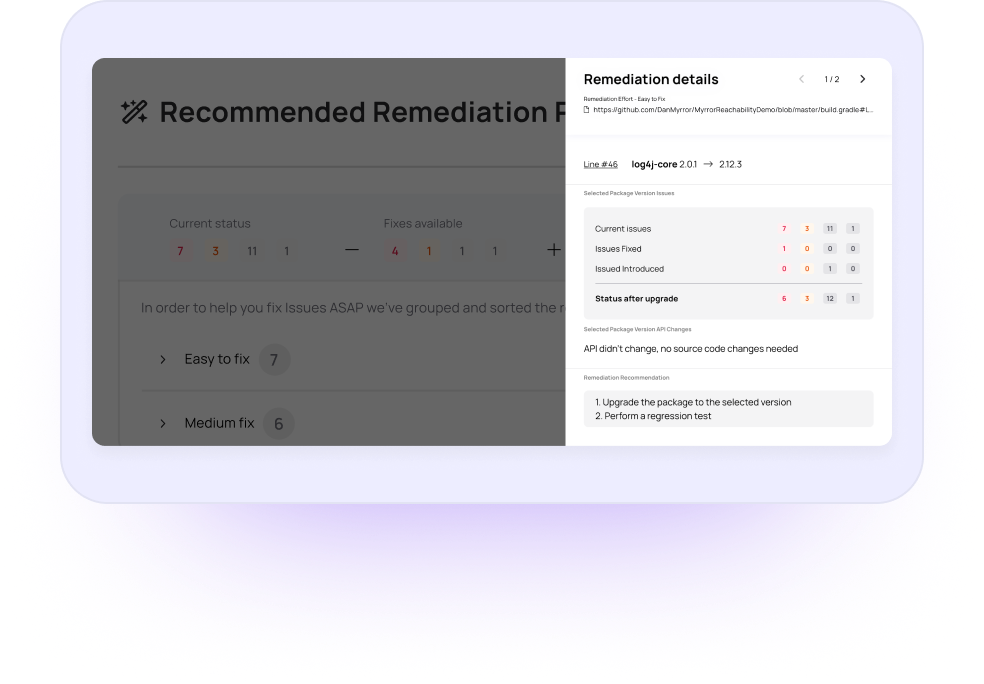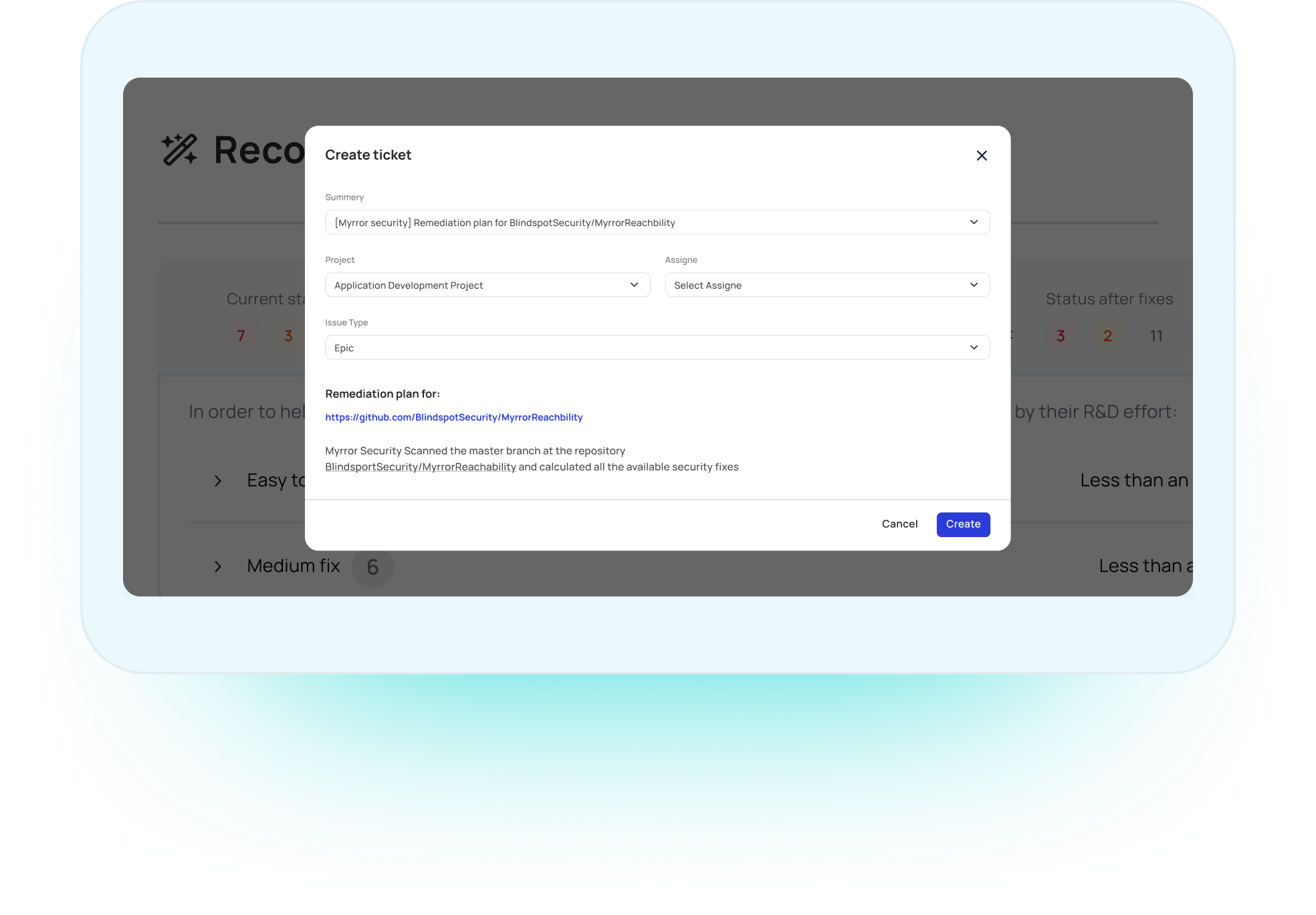Contextual Remediation Engine
Detailed and Contextual Remediation Plans Help Your Developers Fix 50% Quicker.
Stop the AppSec- engineering back and forth with a remediation planner that puts remediation plans on autopilot to restore your sanity.
What is Myrror’s Contextual Remediation Task Planner?
Bridge the gap between security and engineering by calculating the optimal path to remediation and providing a highly-detailed developer-friendly fix list. The platform analyzes the impact of each remediation step, and estimates the amount of time and effort required to perform each fix, making the handoff process between security and engineering seamless.


In Practice:
Step 1
Myrror identifies the necessary remediation for a given risk, including its impact on related packages and dependencies. Obtain remediation advice for not only for vulnerabilities but various supply chain attacks.
Step 2
Myrror understands the differences between package versions, including function removals, function parameter changes and more. It then uses this context to calculate the effort required to remediate a risk and analyzes the impact it will have, including whether the change will break your code or not.
Step 3
Myrror then generates a remediation plan, complete with concrete steps, focusing on easy developer handoff for quicker fix times. This streamlined approach eliminates the burden of manual triaging, enabling quicker Mean Time to Recovery (MTTR).
Key Features of Myrror’s Contextual Remediation Engine
Myrror’s Contextual Remediation Engine provides concrete remediation steps that can be easily handed off to your development team. By predicting the eventual impact of each fix, the remediation plans ensure you’re not chasing newly-introduced vulnerabilities after every change.
Impact Analysis
Myrror looks for new potential vulnerabilities that might be introduced into the codebase when suggesting a fix, effectively predicting the eventual impact of the changes.
Gain early warning for any API changes—in both direct and indirect dependencies—that might break your code, making sure actions relating to security remediation don’t end up creating unnecessary development work.
Automatic Planning
Taking all potential impacts into account, Myrror then generates a remediation plan that estimates the time required for each fix.
It first enumerates all the necessary fixes, then categorizes them into four groups: easy changes (such as simple upgrades without API modifications), medium & hard changes (such as one or more breaking API changes) and more complex changes (such as packages without any available upgrades).
Easy Developer Handoff
Considering all potential regressions, Myrror then creates a remediation plan automatically that creates as few regressions as possible.
By planning for remediation in advance, you’re making sure you won’t be backfiring another flood of vulnerabilities as soon as the new version is deployed.
See How We Do It
Lorem ipsum dolor sit amet, consectetur adipiscing elit, sed do eiusmod tempor incididunt ut labore et dolore magna aliqua. Ut enim ad minim veniam



